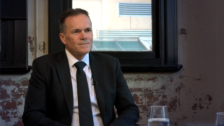Why advisers are deserting Platinum
Comment by Jamie Nemtsas
I have been an adviser for 25 years and, apart from a quick dalliance with AMP as a graduate, I have worked at or owned a self-licensed wealth management practice for all that time.
Those practices, independent from institutional owners, have always built portfolios from the ground up. Asset allocation, tactical tilts and then portfolio construction consisted mainly of sector-specific managed funds and direct investments.
For nearly all those years, one portfolio manager’s name has been a first-up starter when our investment committee would meet to discuss model portfolios. It was normally first picked and always in our portfolios for one role or another. A stalwart, a staple, a required ingredient in portfolio build. But that all ended recently.
It is almost with a sense of sadness that I say: Platinum is no longer in our model portfolio.
Platinum, which started out with the MLC Platinum Global Fund, added the direct wholesale products as the firm grew, and then broadened with wrap platform access.
Our more recent exposure – until early this year – was through the Platinum Asia Fund. We thought Platinum had really found a great mind in Joseph Lai, the portfolio manager of the fund until Christmas of last year.
In the beginning, not long after its launch in 1994, Platinum was already a clear leader. Kerr Neilson, the founder, was what legends are made of. For younger readers, he entered legend status in the stock market crash of October, 1987.
When the crash occurred, Neilson was running the BT global fund from Sydney, which sailed through apparently unscathed. Some competitor funds were down 25 to 35 per cent for the year ended October 1987, but BT’s global equities fund and other BT strategies were ahead 15 to 20 per cent, thanks to an options bet against a continuation of the preceding bubble.
Now, maybe all the credit cannot be given just to Kerr for that move, with the head of asset allocation, Olev Rahn, rightly receiving acclaim as well, but I gave Kerr most of the credit because he oversaw that fund, which would have been the most vulnerable. And I think many others did too. He had positioned his BT fund perfectly and the legend was born.
So, what has made us change our mind on Platinum? There are several reasons:
- Engagement with Platinum is hard; it has always been a firm with which it is hard to engage, from an adviser’s perspective. The management, from Kerr down, seemed to let the name speak for itself. Platinum encouraged the portfolio managers to interact with the advisers, which was a nice idea, but it never happened. It still doesn’t happen. In a world where advisers need information at their fingertips, Platinum isn’t helping at all.
- Portfolio managers like Joseph Lai, a star in my mind, were allowed to leave and create their own shop – he is now with Ox Capital, part of the Fidante group of boutiques. Same with Jacob Mitchell, who left Platinum in 2015 to start Antipodes Partners, with the help of multi-affiliate manager Pinnacle. Antipodes is already half the size of Platinum.
- Platinum’s management owns 49 per cent of the listed company’s stock (ASX: PTM) and 48 percentage points of this is owned by Kerr and the current chief executive and co-founder Andrew Clifford. The rest of the 138 staff own less then 1 per cent. Kerr is retired and I am not sure why Andrew hasn’t followed suit. Both are billionaires, or as near to it as matters. The problem is, they act that way.
- Platinum’s funds are old and expensive. The fee structure hasn’t changed much for more than 20 years and is not priced anywhere near what manager global managers’ prices now are.
- The main fund, the Platinum International Fund, which, according to Morningstar, has $8.85 billion in it, has missed its benchmarks on a one-year, three-year, five-year and 10-year basis.
- When Platinum listed on the ASX in 2007, it had funds under management (FUM) of about $22 billion. Now, 14 years on, the group has a FUM of $23.5billion. If you had invested in Platinum stock on the first day of trading in 2007 you would have lost nearly half your money in absolute terms, more in constant-dollar terms. On that first day, the stock price was $8.01. Today it hovers around the $4.30 mark. Its stock price chart looks more like AMP’s than that for one of the most recognised portfolio managers in the country.
*Jamie Nemtsas is a principal of Wattle Partners and the managing director of The Inside Network, owner of this masthead.











